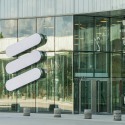
Ericsson sees the IoT market evolving as a series of steps. And, according to Marie Hogan, head of the company's Broadband and IoT business area networks, we're really still on the first step.
"As with any new technology, there's a lot of hype in the beginning and then there's some exploratory rollouts and trials and use cases, and then it starts to take off. We see that that take-off is really starting now," she said.
Thus, in order to help grow the market, Ericsson today is essentially outlining what it believes are the next few steps for the cellular IoT industry.
"The intention of this launch really is for us to answer the question, 'What is next for cellular IoT?'" Hogan noted. "There seems to be a clear need for service providers to expand beyond these initial or basic use cases, to a broader portfolio for more advanced use cases to address more opportunities across more industries."
The first step on Ericsson AB (Nasdaq: ERIC)'s IoT ladder is what it calls "Massive IoT," covering use cases like asset tracking and smart metering. These are the types of services that operators today are working to cash in on, using technologies ranging from 2G to LTE M.
It's also worth noting here that Hogan believes the standards wars around the IoT are largely a thing of the past: "In 2016 or so, it was quite specific: Certain operators would use narrowband (NB-IoT), certain operators would use Cat M (also called LTE M). But now we see almost all the networks globally are using both technologies or planning to in the near future."
But "Massive IoT," via either NB-IoT or LTE M, is just the first step in Ericsson's IoT vision. The next steps are:
Broadband IoT (e.g. infotainment in cars, AR/VR, drones and advanced wearables);
Critical IoT (e.g. autonomous vehicles); and,
Industrial Automation IoT (e.g. collaborative robotics in manufacturing).
Hogan acknowledges that Massive IoT and Broadband IoT, per Ericsson's nomenclature, are largely possible today, but Critical IoT requires technologies in the 3rd Generation Partnership Project (3GPP) 's recently approved Release 15 specification, while Industrial Automation IoT won't be available until the 3GPP issues Release 16, which is not expected until 2020.
You're invited to attend Light Reading’s Big 5G Event! Formerly the Big Communications Event and 5G North America, Big 5G is where telecom's brightest minds deliver the critical insight needed to piece together the 5G puzzle. We'll see you May 6-8 in Denver -- communications service providers get in free!
Nevertheless, the company said it is essentially providing an IoT roadmap for operators looking to hash out their long range plans for the sector. "We are now describing 'What's next?' for our customers and how they can make the most out of their 4G and 5G investments on the same network and address more advanced IoT use cases across industries," Fredrik Jejdling, Ericsson's EVP and head of networks, said in a release.
Ericsson's bet on IoT stems in part from the company's belief that the space will undergo dramatic growth in the years ahead. The firm predicts that the cellular IoT space will grow from 1 billion total connections at the end of 2018, to 4.1 billion in 2024.
That outlook largely dovetails with forecasts from other firms. According to a recent market report published by Persistence Market Research, the cellular IoT market was worth around $1 billion in 2017 and will growth at a compound annual growth rate of nearly 27% through 2026.
Further, operators around the world continue to report solid if not spectacular growth in their IoT businesses. For example, Verizon Communications Inc. (NYSE: VZ) reported that its IoT revenues in Q4 2018 grew 9.5% year over year.
Of course, the cellular IoT space -- spanning the likes of 2G, LTE M and NB-IoT connections -- is just one piece of a much larger puzzle. Other wide-area IoT technologies like LoRa and Sigfox stand to connect millions of additional devices, while shorter-range technologies like Bluetooth, Zigbee and WiFi likely will also play a role in the broader mosaic of the IoT.
— Mike Dano, Editorial Director, 5G & Mobile Strategies, Light Reading | @mikeddano
Read more about:
EuropeAbout the Author(s)
You May Also Like











